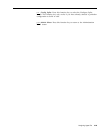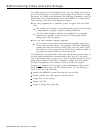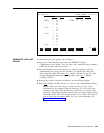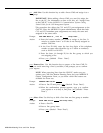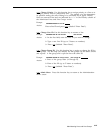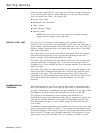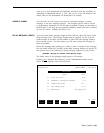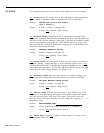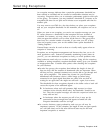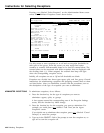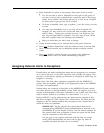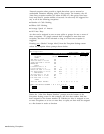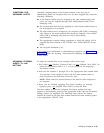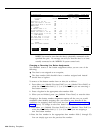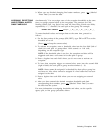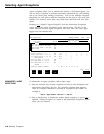
Selecting Exceptions
An exception message indicates that a particular performance threshold has
been reached or exceeded and an unusual or undesirable situation may be
occurring. Exceptions allow you to customize performance goals for each split
or line group. For instance, you may establish a threshold of 3 minutes as an
acceptable talk time for one split and 4 minutes as an acceptable talk time for
another split.
You may want to use CMS for a few days before you select your exceptions
and set your exception thresholds. In the meantime, all exceptions are set to
off .
When you turn on an exception, you receive an exception message on your
PC screen whenever a threshold for that exception has been reached or
exceeded. For instance, you may choose to receive an exception message
when an agent has refused a call or when all the lines in a line group have
been busy for a certain number of seconds. If you want your PC to beep
when an exception occurs, turn on the audible alarm option described in
“Setting Captions.”
External lamps can also be used as alerts to visually notify agents when an
exception is occurring.
Exceptions are an important management tool because they free you to do
more productive work.
Instead of constantly monitoring system status on
your PC, you can administer exceptions to notify you when problems arise.
Most businesses need only two or three exceptions. Using all the exceptions
available or setting unrealistic exception thresholds merely gives you unusable
or inappropriate data.
Consider these points when choosing the exceptions
for your business:
● In sales line groups, the exceptions that indicate the length of time all
lines are busy and the number of abandoned calls are important. When
all lines are busy, potential customers may not be able to get through and
may call a competitor. This means lost revenue for your business.
Abandoned calls (instances where a caller hangs up before being
connected to an agent) signal that there are callers who are tired of
waiting for an agent and who might not call back— again, lost revenue.
The thresholds for these exceptions depend on the dollar value of each call
versus the expense of an additional agent:
In businesses where each call generates high revenue (or where
customer service directly affects sales), the thresholds should be set
low. Thus the exception messages can alert the supervisor before too
many calls are lost.
In businesses where the revenue per call is low, it may not be
economical to have enough lines and agents to handle all calls.
Exception thresholds could be set high.
● In a service business, agent productivity and cost per call may be
important concerns. In this situation, the length of time an agent spends
on a call (talk time) and in the after-call-work state may be the most
important exceptions to monitor.
Selecting Exceptions 4-31



